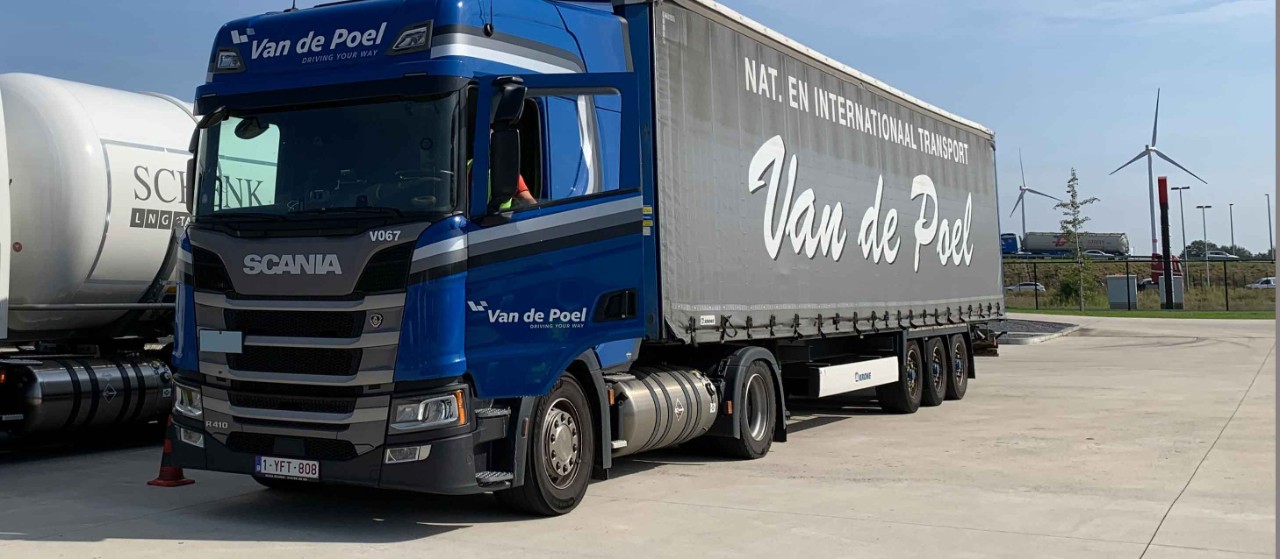
Biomethane certificates to speed up the shift to sustainable transport
15 DECEMBER 2021
Certificates for biomethane are expected to speed the shift to sustainable transport. Belgian haulier Van de Poel has had positive experience using the system. “They work as tangible proof of our sustainability efforts,” says Chief Operating Officer Wim Van de Poel.
Renewable fuels are an important part of the shift towards sustainable heavy transport. But how can we accelerate their use to promote green solutions that are already available?
Belgian transport company Van de Poel asked itself that question and came up with an answer: by increasing the share of biomethane in its fleet of trucks running on liquefied natural gas (LNG).
Van de Poel’s steps to reach 55 percent CO2 reduction
“Bio-LNG, specifically liquefied biomethane, is the most eco-friendly and cost-effective alternative fuel available for our current business and operations right now,” says COO Wim Van de Poel. “Increasing the use of biomethane is a great opportunity for us to take the necessary steps to be in line with the 55 percent emission-reduction target which the EU has set for 2030.”
Van de Poel’s first step was to approach its fuel supplier Drive Systems as well as Scania, for which the Belgian haulier transports parts and components between suppliers in Germany and Scania plants in the Netherlands and Belgium.
“Thanks to our long-standing relationships, it was an obvious choice to set up a ‘join-hands’ project with Scania and our fuel supplier Drive Systems,” says Wim Van de Poel. “Together, we formed a pilot project where we committed ourselves to use a certain amount of biomethane for Scania’s flows during a test period of one year.”
Biomethane share starts at 25 percent
At first, the certified share of biomethane will be 25 percent. Compared with LNG, biomethane reduces CO2 emissions by about 70 to 80 percent.
“But we plan to scale up and increase the share of biogas as the project evolves,” says Wim Van de Poel.
Jennie Edvardsson, Sustainable Transport Manager at Scania, says the initiative is exactly what Scania wants to encourage. She hopes the experiences and lessons learned will spread to other markets.
“This is what makes the shift happen,” she says. “As a transport buyer in this case, we are very glad that our transporter took an initiative that supports Scania’s overall goal of reducing carbon emissions in our own land transports by 50 percent by 2025 compared with 2015.“
High potential with biomethane
Biomethane has high potential as a renewable fuel that can contribute to the shift to sustainable transport. Mainly derived from waste, such as from agriculture, it supports circular energy models and has many positive effects for local communities.
“Today, much of the waste leaks as methane to the air,” says Fabrizio Teatini, Business Development Manager at Drive Systems. “But this sustainable feedstock has great potential. Today we have about 3 million cubic metres per year available in Europe. But the potential production is about 100 billion cubic metres in 2050.”
Another advantage for biomethane, Teatini says, is that transport companies can start using it right away, thanks to an already existing infrastructure for LNG.
“This means the fuel can be applied immediately, without modification, and that a transport company can shift very easily to bio-LNG,” he says.
Certificates can speed up the shift
The participating companies are convinced that biomethane certificates are an important key to making biogas more available.
“With the certificates it is possible to offer a verified carbon footprint reduction,” says Leif Borgstedt, Senior Energy Trader and Certificate Specialist at Scania. “This means that transporters and transport buyers with set long-term CO2 goals could be offered an increased share of biomethane over time”.
“We are convinced this will add trust and transparency and that it will drive growth and increase the production of sustainable fuels, just as green electricity certificates did on the energy market,” he says.
So how do we make it happen in the transport industry? The three companies believe cooperation among different players is key to making things really take off.
As Wim Van de Poel puts it, “We need a ‘multi-stakeholder’ approach where transport companies, transport buyers, fuel and infrastructure suppliers and vehicle manufacturers like Scania cooperate and form partnerships. No one can succeed alone.”
Biomethane certificates in short
- A biomethane certificate guarantees a certain amount of biomethane to be added to the grid, or more locally if it is liquefied gas.
- Along with the certificate is a Proof of Sustainability that gives the carbon footprint calculated according to the EU’s Renewable Energy Directive (RED II), from the feedstock to the production of the fuel.
- With certificates and the Proof of Sustainability it is possible to offer a verified carbon footprint reduction with traceability along the value chain.
- The market for biomethane certificates is under development and is seen as important for increasing the share of biomethane in the gas grid.